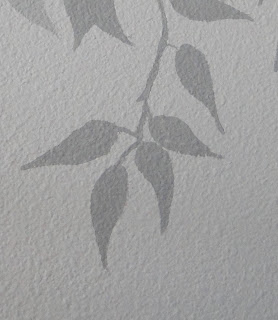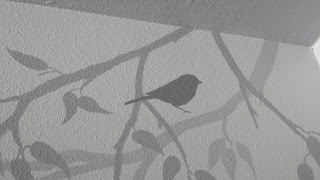In an effort to be more frugal, I've decided to test the affordability and effectiveness of some homemade products. Powdered homemade laundry detergent seems to be highly praised, so I thought I'd start with that.
Most homemade laundry detergent recipes are similar, so I researched the ingredients to find out why they were added to the recipe. It turns out there are three ingredients that are nearly always included, and several ingredients that are optional. Instead of posting all the recipes I found, I posted a general recipe you can adapt if you decide to make your own.
Recipe for Homemade Laundry Detergent:
Necessary ingredients:
- 1 cup Borax (Cleans, disinfects, and softens water).
- 1 cup Arm & Hammer Washing Soda (This is sodium bicarbonate, and alkali salt that breaks down grease and dissolves stains. It softens water by binding with chemicals that cause hard water, allowing the detergent to form more suds and work more effectively).
- 1 bar of Fels-naptha soap, Pink Zote Soap, Kirk’s Castile unscented soap, or Ivory Soap, just don't use something heavily perfumed. (Cleans).
Optional Ingredients:
- 1 cup Oxyclean or store brand oxyclean
- 1 cup box Arm & Hammer Baking Soda
Some recipes include this as a whitener and to make it smell nicer, it also softens water.
- White Vinegar
- Calgon Powder
- 1/4 cup Cascade dishwashing detergent per load
- A few drops of essential oils
Directions:
Grate or shred soap with cheese grater or food processor. Mix all ingredients together, and use one-two tablespoons per load using the directions on your machine. This soap can be a little slower dissolving in water than store-bought soap, so it works best to put the soap in the machine and start the water before adding clothes.
Grate or shred soap with cheese grater or food processor. Mix all ingredients together, and use one-two tablespoons per load using the directions on your machine. This soap can be a little slower dissolving in water than store-bought soap, so it works best to put the soap in the machine and start the water before adding clothes.
Notes:
Hot or Cold? Some sites claimed using hot water was essential when using homemade, others claimed cold worked fine, still others claimed you only need hot water for whites. Detergents begin to lose their effectiveness below sixty degrees either commercial or homemade.
Hard Water? If you have hard water, you will need more detergent-this is true of store-bought detergent as well.
High Efficiency Machines? I do not have a high-efficiency machine, so I am not aware what special needs these machines have. Some claim that this is not a high-sudsing recipe, so it is ok, but I don't have enough knowledge on this point to make recommendations.Pre-treating Stains? Some sites recommend rubbing stains with the Fels-naptha soap, others suggest using Dawn Dishsoap. I haven't tried either method. I think for now I'll stick to presoaking in water and Oxiclean. If I end up testing pre-treatment methods, I'll post the results. I have to pretreat stains for my regular detergent anyway so I don't think it is a reflection on how well this recipe works.
Want a larger yield recipe? 4 lbs borax (equals about 11 cups), 2 3lb 7oz box washing soda (one 3lb 7 oz box is about 5.5 cups), 11 bars soap.
Where can I get the ingredients? Most larger supermarkets have these ingredients. I found everything at our small Walmart, though the only bar soaps available there were Fels-naptha soap and Ivory.
Shredding the soap? Some people complain of the tediousness of hand-shredding the soap, but others said it was no big deal. The soap I was shredding was a little hard to shred by hand-I could have done it but after a few minutes I decided to just do in in the processor. I tried both of the options my little food processor offers, the shaving option came out looking like grated cheddar, the cutting option made it little pea sized lumps. I was hoping for more of a powder to make it easier to mix everything together. I ended up going with the cheese curls, then chopping those down. I think Ivory would powder up better. I don't think shape matters much with effectiveness unless you have chunks too big to dissolve during the wash.
I tried to anticipate your questions, though this is my first attempt at making the soap. I'll try to answer any other questions you may have, but this is my first attempt too. In a few months, after using up this batch, I will post an updated review. Thanks!
To sum up:
When I added everything up, the cost is nearly the same as cheap commercial laundry detergent, and about half that of the nicer brands. If you shop around and find the ingredients at a low price, and use a less expensive bar soap, you may be able to cut the cost of making your own even further than I did. I haven't figured out how to get the $0.01 per load that some makers of their own soap got.
Homemade worked just as well as store bought, and worked even better when Oxyclean was added. Will I make it again? I was really hoping the cost difference would be greater. I would definitely switch if saved me more money, it was easy enough to make, especially using a food processor, and it does the job.
Price Comparison:
Homemade Laundry Detergent
|
Cost
|
Ounces
|
Cups
|
Tablespoons (Loads)
|
1 4 lb 12 oz box Borax
|
$2.98
|
76
|
11
|
110
|
2 3 lb 7 oz boxes Arm & Hammer Washing Soda
|
$6.48
|
110
|
11
|
110
|
11 5.5 oz bars Fels-Naptha Soap, grated
|
$10.67
|
60.5
|
5.5
|
55
|
Total Cost
|
$20.13
| |||
Total Ounces
|
246.50
|
Cost per Ounce
|
$0.08
| |
Total Tablespoons (Loads)
|
275
|
Cost per Load
|
$0.07
| |
Regular Tide Detergent 169 oz box, 120 loads
|
Total Cost
|
$20.47
| ||
Cost per Ounce
|
$0.12
| |||
Cost Per Load
|
$0.17
| |||
Regular Sun Detergent 85 oz box, 80 loads
|
Total Cost
|
$4.98
| ||
Cost per Ounce
|
$0.06
| |||
Cost per Load
|
$0.06
| |||
I added the package totals together to get the total ounces, then I figured ~10 tablespoons detergent per cup, about 27.5 cups for a large batch, so about 275 tablespoons. This is a pretty rough estimate since I didn't measure the amount of detergent precisely, I just wanted to get an idea if the cost was comparable. Ivory Soap was $4.27 for a pack of nine bars, if you used that, your cost would be a bit less.
Effectiveness:
Here are the images of the results (apologies for the quality):
Now, I wasn't expecting stains like these to come clean completely, but I thought it was a quick way to compare cleaning ability. I took some white cotton cloth, and stained strips with soil, ketchup, grass, driveway oil puddle, and soy sauce. I made mini stained quilts and soaked two of them in Oxyclean water for about two hours. Then I washed one the pre-soaked, and one of the un-soaked in two seperate loads. I used hot water for both loads, and added Oxyclean to both loads because I wanted to keep it as close to the way I normally wash as possible. I but added the reccomended amount of Sun brand detergent to one load, and two tablespoons of homemade detergent to the other load. Thinking back I should have made one more and washed it in water for a control. Does your kid need a science fair project?
I was a little surprised at the results. The winner? Presoaked + Homemade. The looser? Unsoaked Homemade. For some reason, combining Oxyclean presoaking with the homemade detergent yeilded the best results. I was also a bit surprised that the presoaking didn't make as much of a difference as I thought it would, I guess the Oxyclean I added to the wash did nearly the same job as presoaking.
I'd like to do this test again, without the oxyclean in the wash at all, and try it with a more expensive commercial brand.
Pretreating Stains:
Of course I'll have to pretreat stains using homemade detergent, just as I do with store-bought soap.
Let me explain, no, there is to much. Let me sum up:
- Work fast if possible, fresh stains come out more easily.
- Avoid rubbing stains with bar soaps, many stains can be set in by doing this.
- Avoid heat: if the stain doesn't come out with the first wash, don't put it in the dryer, re-treat and re-wash.
- Pretreat with a stain remover that contains enzymes if the stain is a protein stain like blood or grass.
Here is a good site on removing stains.









